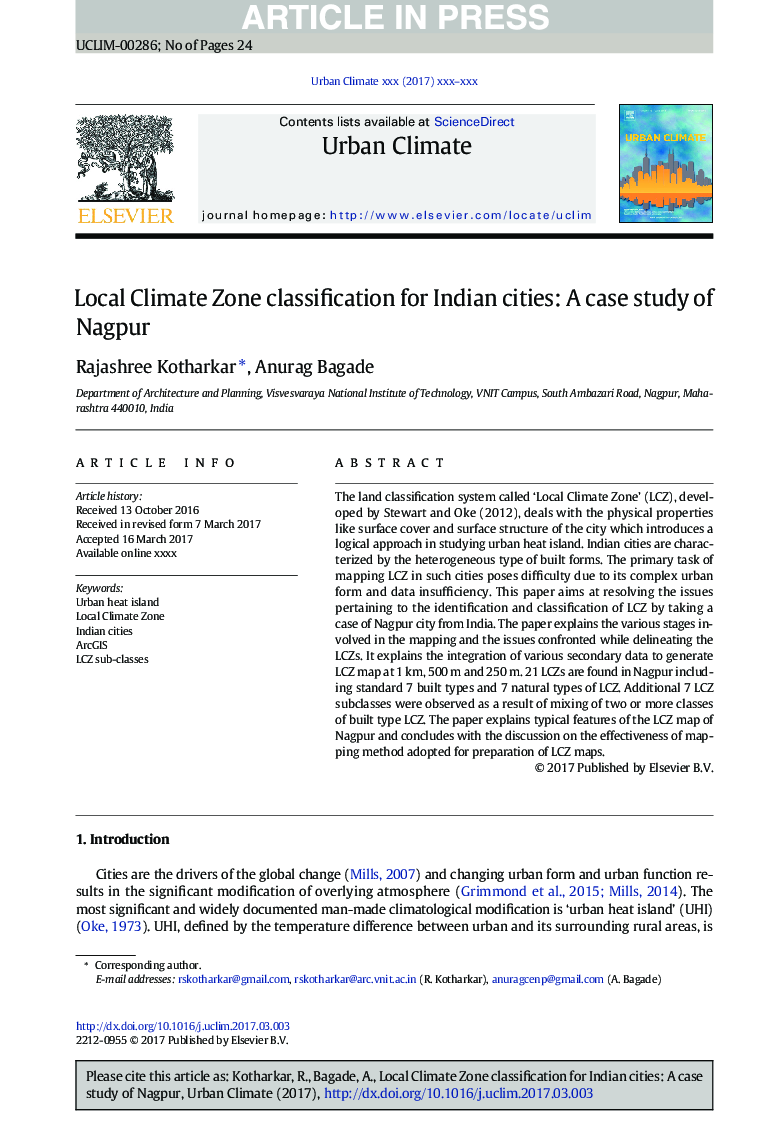| Article ID | Journal | Published Year | Pages | File Type |
|---|---|---|---|---|
| 6576879 | Urban Climate | 2018 | 24 Pages |
Abstract
The land classification system called 'Local Climate Zone' (LCZ), developed by Stewart and Oke (2012), deals with the physical properties like surface cover and surface structure of the city which introduces a logical approach in studying urban heat island. Indian cities are characterized by the heterogeneous type of built forms. The primary task of mapping LCZ in such cities poses difficulty due to its complex urban form and data insufficiency. This paper aims at resolving the issues pertaining to the identification and classification of LCZ by taking a case of Nagpur city from India. The paper explains the various stages involved in the mapping and the issues confronted while delineating the LCZs. It explains the integration of various secondary data to generate LCZ map at 1Â km, 500Â m and 250Â m. 21 LCZs are found in Nagpur including standard 7 built types and 7 natural types of LCZ. Additional 7 LCZ subclasses were observed as a result of mixing of two or more classes of built type LCZ. The paper explains typical features of the LCZ map of Nagpur and concludes with the discussion on the effectiveness of mapping method adopted for preparation of LCZ maps.
Related Topics
Physical Sciences and Engineering
Earth and Planetary Sciences
Earth and Planetary Sciences (General)
Authors
Rajashree Kotharkar, Anurag Bagade,
